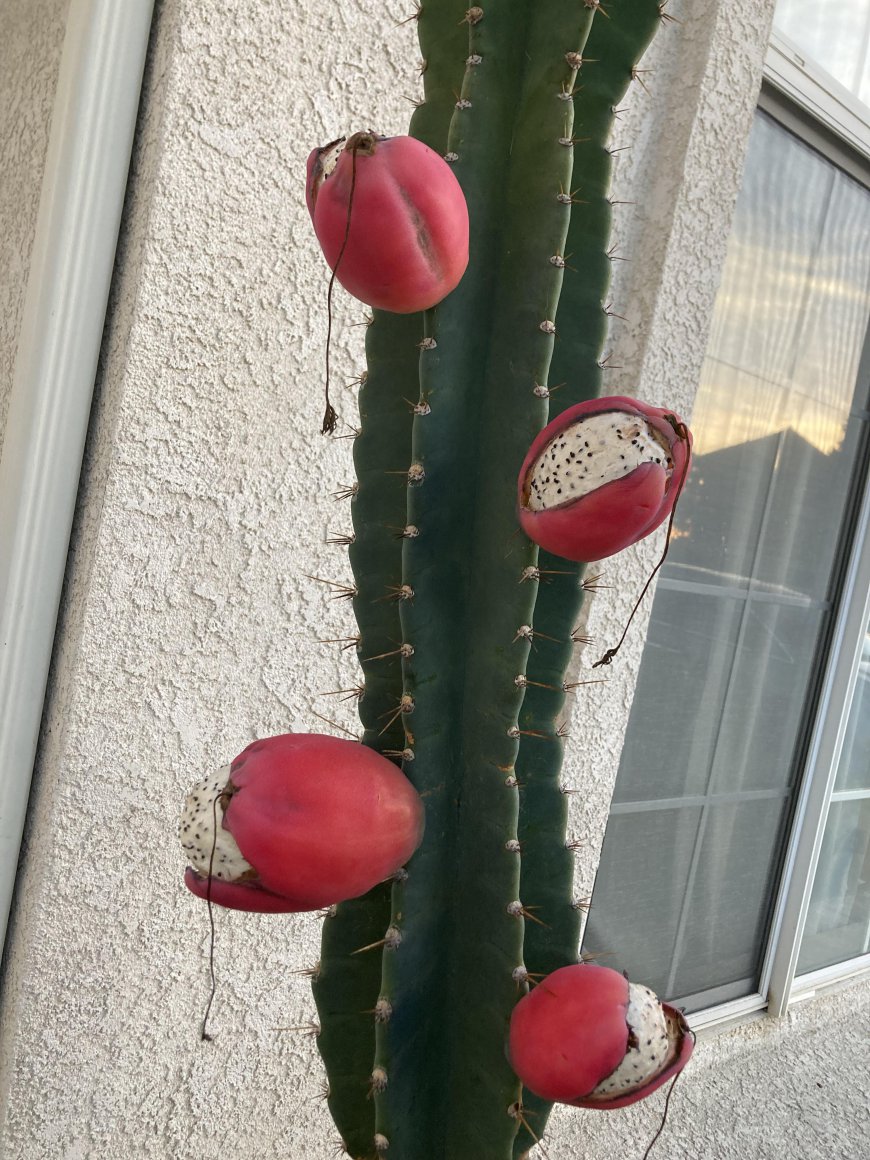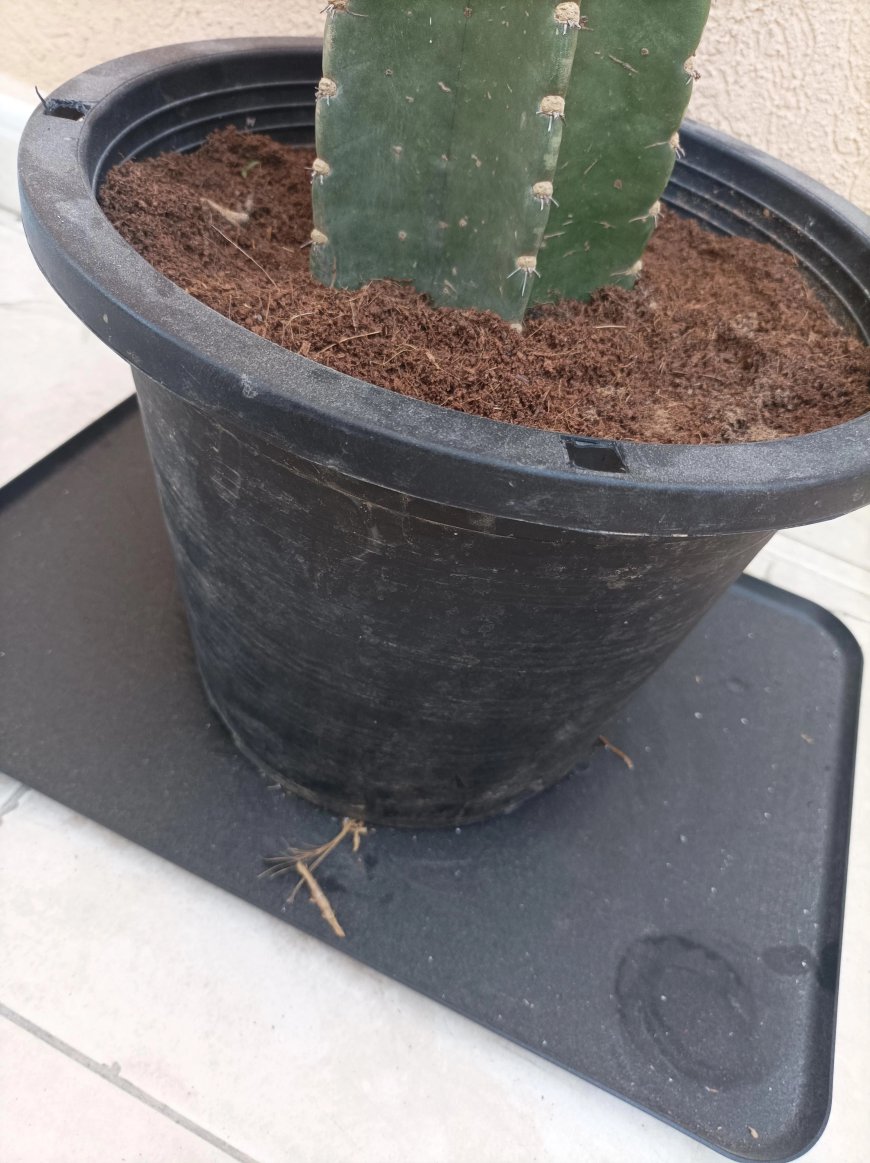Peruvian Apple Cactus: Varieties and Similar Plants
Discover the varieties of Peruvian Apple Cactus and similar plants that enhance your garden with their beauty and low-maintenance care.

The Peruvian Apple Cactus (Cereus repandus), also known as the Apple Cactus or Hedge Cactus, is a stunning desert plant renowned for its striking architectural beauty and edible fruits. Belonging to the Cactaceae family, this species is highly adaptable to indoor and outdoor environments, making it a favorite among cactus enthusiasts and gardeners. However, beyond its aesthetic appeal, the Peruvian Apple Cactus has different varieties and closely related plants that share similar features, growing habits, and care requirements.
In this blog, we’ll explore the key varieties of the Peruvian Apple Cactus and some similar plants that complement any space with their rugged charm and unique characteristics.
Understanding the Peruvian Apple Cactus
Before diving into the varieties and similar plants, it’s important to understand the basic characteristics of the Peruvian Apple Cactus.
- Scientific name: Cereus repandus
- Native region: South America, particularly Argentina, Peru, and surrounding areas
- Growth: The cactus grows upright, forming ribbed, cylindrical columns that can reach heights of 10 to 20 feet in the wild.
- Fruit: The cactus produces an edible, sweet fruit often referred to as the "Peruvian apple," which resembles a dragon fruit with a tangy flavor.
Key Varieties of Peruvian Apple Cactus
Though the Peruvian Apple Cactus is often referred to by one name, there are slight variations in its appearance and characteristics based on its specific environment or subspecies. While not distinct "varieties" in the same way as hybrid plants, the following types of Peruvian Apple Cactus represent natural or cultivated diversity.
1. Cereus repandus ‘Monstrosus’
Known for its twisted, contorted growth pattern, the 'Monstrosus' variety of Cereus repandus has an unusual, almost alien-like appearance. It doesn’t follow the typical columnar structure, making it an attractive option for gardeners looking to add visual interest to their plant collections. Its irregular form gives it a more sculptural look, while still maintaining the same care and environmental requirements of its standard counterpart.
- Size: Typically smaller than standard varieties but can still reach up to 10 feet in the right conditions.
- Growth: Twisted, uneven stems.
2. Cereus peruvianus
Although often sold under the name Peruvian Apple Cactus, Cereus peruvianus is a closely related species that shares many of the same attributes. This cactus can grow to impressive heights, has distinct ribs along its body, and is known for its blue-green hue. Its nocturnal blooms produce a fragrant flower, and the red, pink, or purple fruits are a prized delicacy.
- Size: Can grow over 30 feet tall in ideal outdoor conditions.
- Blooming: Produces large, fragrant, white flowers that open at night.
3. Cereus hildmannianus
Often confused with Cereus repandus, Cereus hildmannianus is a similarly structured cactus that offers a more upright and uniform growth pattern. It is an excellent choice for those seeking a tall, striking cactus that is low maintenance but with fewer irregularities in its stem structure.
- Size: Can grow up to 25 feet tall outdoors.
- Shape: Tall and columnar with fewer offshoots than other varieties.
Similar Plants to Peruvian Apple Cactus
Several other cacti and succulents share similarities with the Peruvian Apple Cactus in appearance, care, or fruiting habits. These plants may be suitable alternatives or companions in your indoor or outdoor garden.
1. Saguaro Cactus (Carnegiea gigantea)
The iconic Saguaro cactus, often associated with the desert landscapes of Arizona, resembles the Peruvian Apple Cactus in its tall, columnar structure and ribbed body. However, the Saguaro grows significantly slower and can live for over 150 years. Both plants require similar arid conditions and plenty of sunlight.
- Size: Can reach up to 40 feet or more in height.
- Fruit: Produces small, red, edible fruits similar to those of the Peruvian Apple Cactus.
2. San Pedro Cactus (Echinopsis pachanoi)
The San Pedro Cactus is another fast-growing, columnar cactus, native to the Andes Mountains in South America. It is widely known for its medicinal uses in indigenous cultures, though it is also appreciated for its ease of care and attractive growth pattern. Like the Peruvian Apple Cactus, it produces fragrant white flowers that bloom at night.
- Size: Grows rapidly, reaching 10 to 20 feet in height.
- Care: Prefers full sun and well-drained soil, similar to the Peruvian Apple Cactus.
3. Blue Torch Cactus (Pilosocereus azureus)
The Blue Torch Cactus is striking due to its blue-green stem color and similar ribbed structure. While it remains more compact than the Peruvian Apple Cactus, it shares a similar care regimen, thriving in bright light and arid conditions. Its vivid color and woolly areoles (the areas where spines grow) make it a standout in cactus collections.
- Size: Grows up to 10 feet tall.
- Appearance: Bluish-green stems with white spines.
4. Organ Pipe Cactus (Stenocereus thurberi)
The Organ Pipe Cactus grows in clusters of multiple columns, giving it a distinctive appearance that resembles a pipe organ. Found primarily in the Sonoran Desert, this cactus also bears edible fruits and features tall, ribbed stems like the Peruvian Apple Cactus. Its flowers bloom at night, and it is often used in landscaping due to its hardy nature.
- Size: Can grow up to 25 feet tall.
- Fruit: Sweet, fleshy fruit, similar in taste to the Peruvian Apple Cactus fruit.
5. Queen of the Night (Cereus greggii)
Known for its exquisite, fragrant, night-blooming flowers, the Queen of the Night cactus shares the nocturnal blooming habit of the Peruvian Apple Cactus. Though smaller and more sprawling in structure, it is a popular plant due to its stunning white flowers that bloom for just one night a year.
- Size: Typically smaller, around 3 to 4 feet tall.
- Flowers: Large, fragrant white blooms that last only one night.
Choosing the Right Cactus for Your Space
When selecting a cactus for your home or garden, it’s essential to consider the available space, light conditions, and how much maintenance you’re willing to provide. The Peruvian Apple Cactus and its related species thrive in full sunlight and well-draining soil. Their impressive vertical growth can be ideal for filling large areas indoors or outdoors, while their relatively low maintenance makes them perfect for those new to cactus care.
If you are looking for a cactus that adds architectural elegance with edible fruit, the Peruvian Apple Cactus is a top contender. However, if you want something more sculptural or compact, varieties like Cereus repandus ‘Monstrosus’ or the Blue Torch Cactus might be better suited for your collection.
Conclusion
The Peruvian Apple Cactus, with its towering form and delectable fruit, is an eye-catching and rewarding plant for any cactus lover. Whether you choose the traditional Cereus repandus or explore other similar plants like the Saguaro or Blue Torch Cactus, these desert beauties bring a touch of the wild to any space. With minimal care and maximum impact, adding a Peruvian Apple Cactus or one of its counterparts is a brilliant way to enhance both your garden and your lifestyle. For more

 FarasAbdul
FarasAbdul 